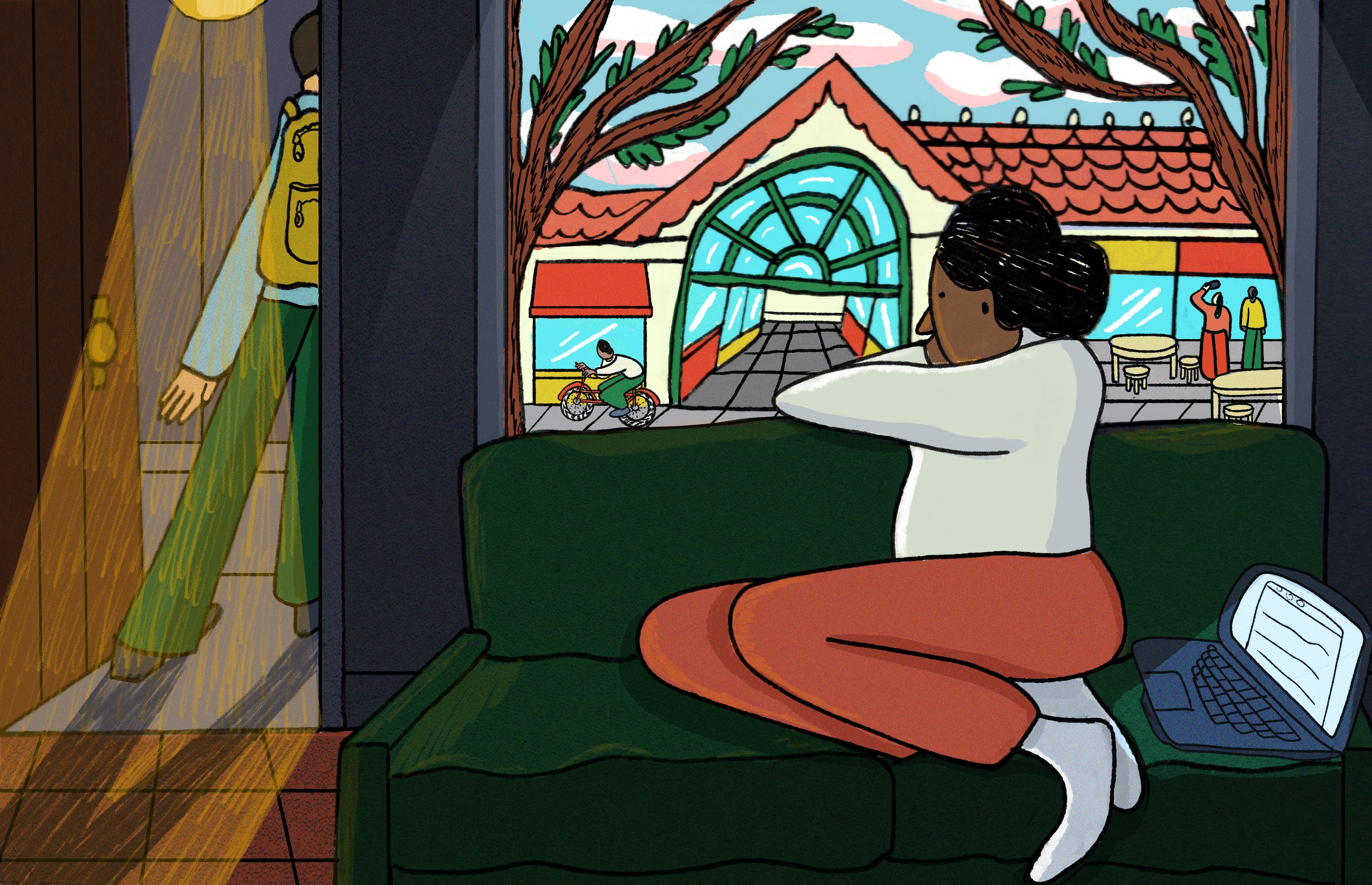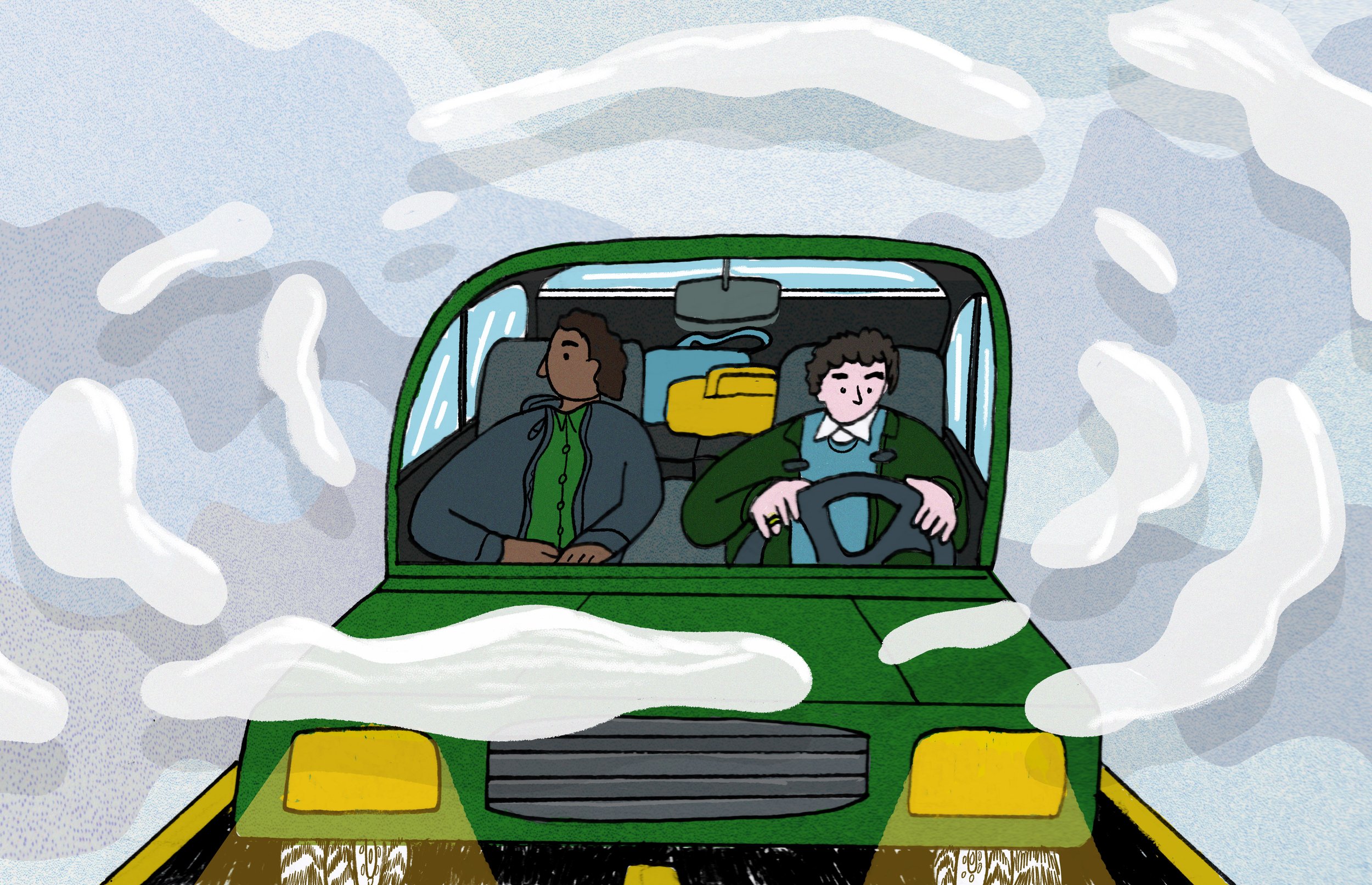10 a.m. at the Bass Harbor Memorial Library

10 a.m. is opening time at the Bass Harbor Memorial Library, which isn’t in Bass Harbor, but across the water in Bernard, where, over a century ago, a woman made her books available to the public, effectively turning her living room into a library.
To get here this morning, I drove down the length of Mount Desert Island, past Somes Sound and Echo Lake and Acadia Mountain. Over the past few years, I’ve become something of a full-time pet-sitter, usually moving between homes multiple times a week. My commute to the library moves as I do: by turns extended and collapsed. I have no living room of my own, but once a week, I have this space to return to. I stumble in with my bags, keys jangling, shoes salt-crusted, and make my way from light switch to light switch, thinking—as I notice the Christmas lights, still on in February—of what Daisy Hildyard calls our “second bodies.” Far more diffuse than those we inhabit, these “second bodies” are byproducts of our energy consumption, a “global presence” we each feed by adjusting thermostats and lighting the stove to feed ourselves.
In the library, I imagine my second body growing larger. I imagine it coming closer, having just switched on 41 light bulbs, its dark, indistinct silhouette as abstract as some future lover, as undulled as their potential for ruin. “My second body came to find my first body,” Hildyard writes, “when the river flooded my house.”
Some days, my body is here on its own. On others, two more are at the door before I’ve hung my coat, quickly followed by a third. For 40 minutes they sit by the fireplace—a teacher and her two teen-aged students—discussing how they might spend a warm summer day plunging into pools and oceans. I continue attending to my duties, turning on the large screen in the main room, where I select a live bird feeder cam at Cornell’s lab, and, in the children’s room, on a smaller screen, an aquarium. A library is many places, many gates: a choose-your-own escape. Soon, bald eagles will begin their nesting season, and I’ll watch their eaglets grow, week by week, all the way out on the opposite coast—using the screens as windows, all while they consume yet more energy.
This week, no one’s at the door. I turn the fireplace on—another switch—and the library turns into a living room. A heart-shaped ornament hangs beneath the Christmas lights, weeks past Valentine’s, too.
Down the street, in the harbor, a house washed out into the ocean last winter, when “once-in-a-quarter-century” storms hit twice the same week. On the other side of the island, stones turned to rubble on the Shore Path, making the path impassable, while—because—our second bodies kept moving, unrestricted, ghost-like.
By the fire now, I watch the sun move on the rug, as if highlighting lines in a book: a slow, fast reader of its own work. It’s only once I’ve looked away that I can tell its slant has shifted, with new patches of the rug’s floral print suddenly in full bloom.
In the evening, for the first time in months, I’ll catch a glimpse of the sun as it sets over the ice-crusted marsh. On my five-minute walk there, after my shift, I’ll pass by a small cottage I briefly lived in, then drive “home” by twelve others I’ve also called that before. Each had its quirks and offerings—Duck Cove, the Bass Harbor Lighthouse—but all made me a neighbor, if transient, to their surroundings’ fragile, bleak beauty, which was also transient. A decade into my life on the island, it seems time itself has passed like that sun on the rug, sluggish and swift, as I’ve gathered and unpacked my bags, depending on rhythms outside my control. Yet even with my first body hard to situate in space, I’ve had warm, dry places to land all along.
For just a few more minutes, I stay by the fire. Soon, I’ll get up to reshelve children’s novels, their backs stamped with Wilderness, Wordless, Your World—call numbers that are truly calls —then read Nathaniel Rich’s Losing Earth, returning, across many Wednesdays, to this near unbearable story—our abandonment of ourselves, the home of all our homes. Still floating, somehow, on a circ desk shaped like a lifeboat—temporarily spared, undeservedly, by its caved, wooden arc.
About the Author
Shir Kehila is a freelance writer and translator. Her work has appeared or is forthcoming in Indiana Review, Majuscule, 45th Parallel, and elsewhere. She holds an MFA from Columbia, and received scholarships from the Bread Loaf Writers’ Conference, the Tin House Summer Workshop, and the Monson Arts Residency. Her essay, "Severed Ties," was chosen by Lilly Dancyger as the winner of the Harpur Palate award for creative nonfiction.
Illustration by Jane Demarest.
Edited by Aube Rey Lescure.










